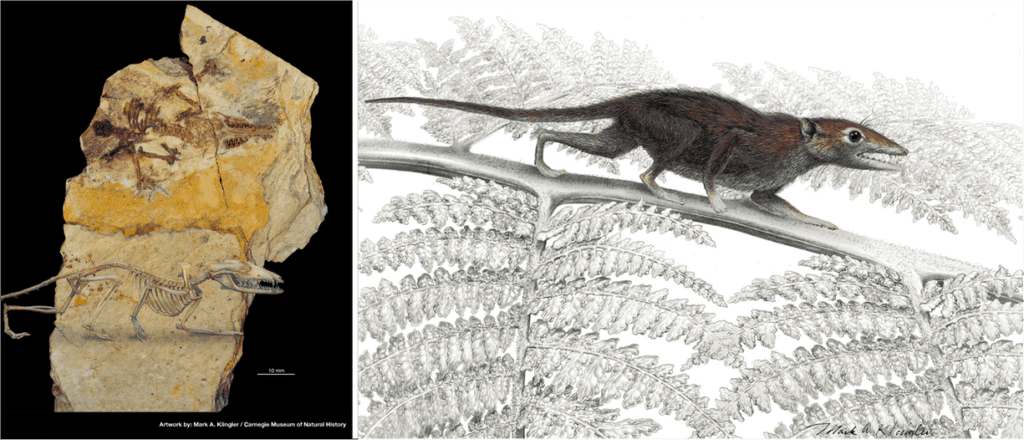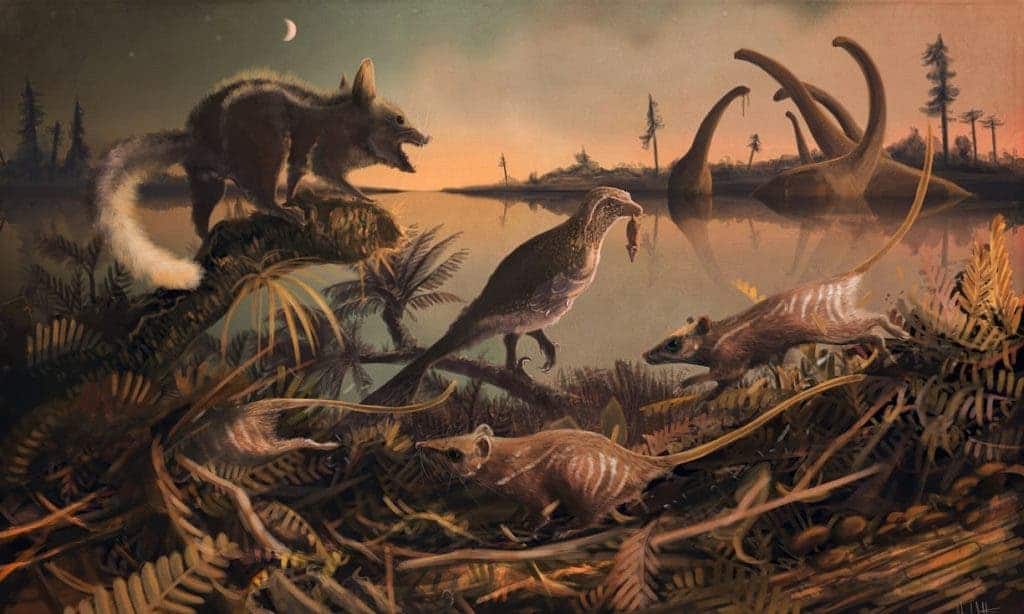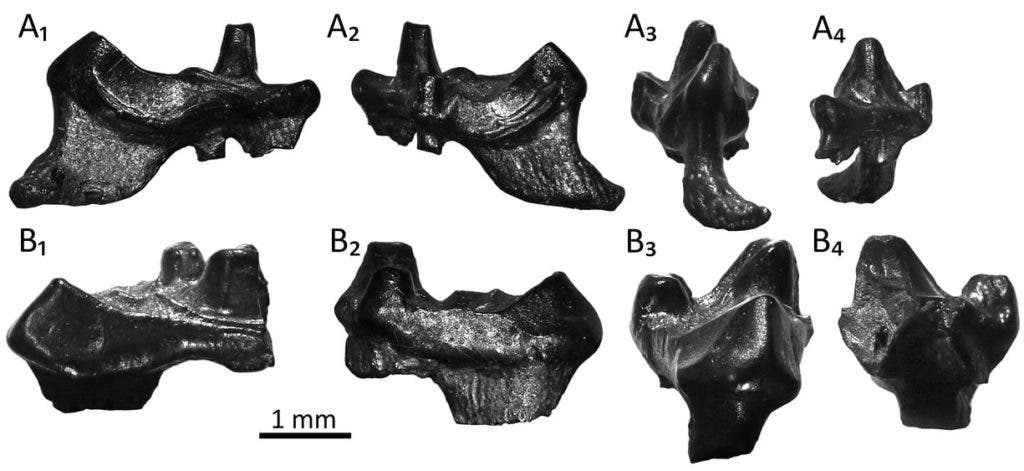Fossil teeth belonging to a small rat-like mammal were discovered in the coast of Dorset, in England. Paleontologists believe that the animal is the first known creature belonging to the line that led to human beings.

A sweet tooth
Researchers from the University of Portsmouth have been analyzing that particular coast for quite a while now, but, ironically, it was an undergrad who made the impressive finding. Grant Smith was sifting through previously extracted samples from early Cretaceous rocks, in the hopes of finding something interesting for his dissertation. At some point, Grant realized he found something remarkable — not one, but two teeth from a small mammal — but he wasn’t quite sure what to make of it, until Dr. Steven Sweetman, a research fellow at the university who led the research, stepped in. Sweetman was contacted by Dave Martill, Grant’s supervisor.
Sweetman realized that the teeth are evolved enough to belong to an advanced mammal, and it didn’t take long for him to understand what he was dealing with. The animal from which the teeth originated turned out to be the earliest ancestor of an extremely diverse group of mammals, ranging from blue whales to pygmy shrews and humans.
“The teeth are of a type so highly evolved that I realised straight away I was looking at remains of Early Cretaceous mammals that more closely resembled those that lived during the latest Cretaceous – some 60 million years later in geological history,” he says. “In the world of palaeontology there has been a lot of debate around a specimen found in China, which is approximately 160 million years old. This was originally said to be of the same type as ours but recent studies have ruled this out.”
“That being the case, our 145 million year old teeth are undoubtedly the earliest yet known from the line of mammals that lead to our own species.”
Evolving mammals

Mammals emerged early in the Triassic age, around 200 million years ago (between 225 and 167, depending on which study you choose to believe). They emerged around the same time as the dinosaurs. However, until the end of the Cretaceous, mammals lived in the shadow of the mighty dinosaurs. The catastrophic event that brought the end of the Cretaceous (and the Mesozoic) wiped off the non-avian dinosaurs but allowed some mammals to prosper. Several mammal groups survived and diversified. Among these groups, there are monotremes (platypus and echidna), the marsupials (such as kangaroos and koalas), the multituberculates (which then died off around 35m years ago), and the eutherians — the so-called placental mammals. Out of the lot, eutherians are the most successful group on Earth so far, and these fossils represent the earliest eutherian we know of. It’s not easy to know when they, as a group, originated, since the fossil record is often lacking.
The animal itself was likely a small, nocturnal, furry creature, somewhat similar to today’s rodents. It may have eaten insects and plants.
“The teeth are of a highly advanced type that can pierce, cut and crush food. They are also very worn which suggests the animals to which they belonged lived to a good age for their species. No mean feat when you’re sharing your habitat with predatory dinosaurs!”

It’s uncommon for such fossil to be found at all, especially in Great Britain, which makes Grant’s finding even more impressive.
“Steve made the connection immediately, but what I’m most pleased about is that a student who is a complete beginner was able to make a remarkable scientific discovery in palaeontology and see his discovery and his name published in a scientific paper,” Martill adds. “The Jurassic Coast is always unveiling fresh secrets and I’d like to think that similar discoveries will continue to be made right on our doorstep.”
To give things an extra-British spin, one of the creatures was named Durlstotherium newmani — not after a particular trait or a famous person, but rather after Charlie Newman, the landlord of the Square and Compass pub in Worth Matravers, close to where the fossils were discovered.
Journal Reference: Steven C. Sweetman, Grant Smith, and David M. Martill. Highly derived eutherian mammals from the earliest Cretaceous of southern Britain. Acta Palaeontologica Polonica in press available online 07 Nov 2017 doi:https://doi.org/10.4202/app.00408.2017



